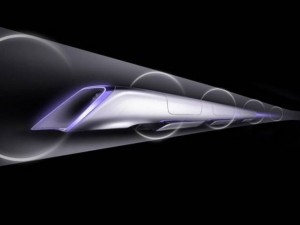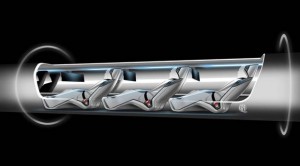Sunday Times 2
The future of travel? A tube called Hyperloop
View(s):LONDON (Reuters) – When asked to imagine the future of transportation, most might draw a car of the future, perhaps solar powered and autonomously driven.

A sketch of billionaire Elon Musk's proposed "Hyperloop" transport system(Reuters)
For a select few the way we’ll move ourselves across the world tomorrow is in a steel tube at speeds of almost 800mph.
This was originally the brainchild of billionaire U.S. entrepreneur Elon Musk, who envisioned being able to whisk passengers between San Francisco and Los Angeles in under half an hour.
Two years after unveiling plans for a futuristic, high-speed Hyperloop transportation system, Musk has now announced plans for building a test track in southern California and a competition for prototype pods.
Several companies subsequently announced plans for pilot projects in California, Texas and other locations, but Musk and his companies, which include privately owned Space Exploration Technologies, or SpaceX, and Tesla Motors Inc electric car company, were not involved.
Hyperloop Transportation Technologies and Dirk Ahlborn are one of those in the driving seat.
“Well imagine a capsule filled with people that’s hovering inside the tube. Inside the tube you create a low pressure environment very similar to an airplane that’s at high altitudes. So now the capsule traveling inside the tubes doesn’t encounter as much resistance, and so therefore can travel really fast with very little energy,” Ahlborn told Reuters.
“It’s 100 percent solar powered, that’s basically the invention here,” he said.

Hyperloop tubes would be mounted above ground on columns, and inside them would be pods five miles apart leaving every 30 seconds (Reuters)
The capsules would ride a cushion of air blasted from underlying skis, propelled by a magnetic linear accelerator, according to Musk’s plans, running above or below ground and along low pressure steel tubes.
When Musk announced this idea in 2013, many were quickly excited – with the Hyperloop described as combining Concorde, a rail gun and air-hockey table; a 57-page design brief imagines it carrying automobiles and people at speeds almost impossible for land based vehicles. Compared to alternatives like the state’s planning high-speed rail system, the Hyperloop would be safer, faster, lower cost and more convenient, Musk originally said in a blog post.
On June 15 SpaceX said it would be building a mile-long test track near its Hawthorne, Calif., headquarters and host a competition for student and independent engineering teams to design subscale transport pods.
But presenting the Hyperloop project to a European audience for the first time in Vienna at the Pioneer’s Festival in May, Ahlborn said HTT were also on the cusp of building their own track.
“So at the beginning of 2016 we will break ground on Quay Valley which is a newly to be built town in California, it’s an 8 kilometre track, which would allow us to optimize passenger boarding and the capsule handling for example,” he said.
“We’re not going to get up to 760 miles an hour, but we believe we can actually break the records that are existing right now, and it’s a necessary phase before we go and build a full scale, full length model,” he added.

